Flow Banding
This page is part of a group of pages on the magmatic aspects of the St Peter Suite. Outcrops of the St Peter Suite in Point Brown and Rocky Point have common flow banding features forming biotite
schlieren marking the contacts between magma batches, interpreted as related to flow banding.
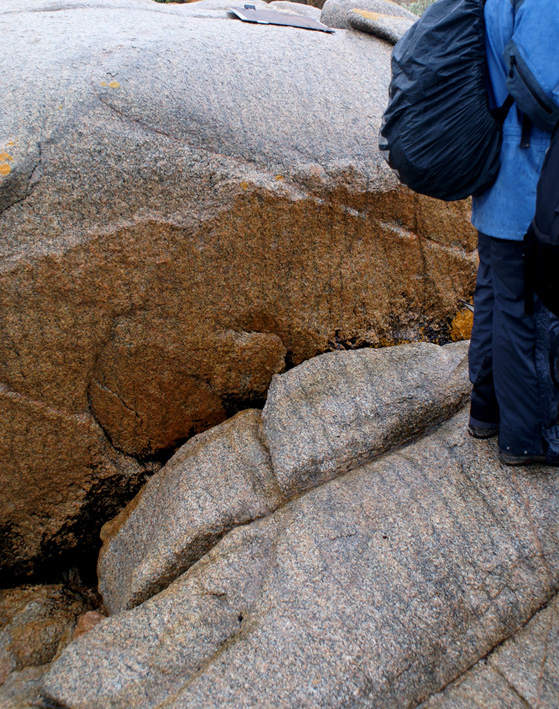
|
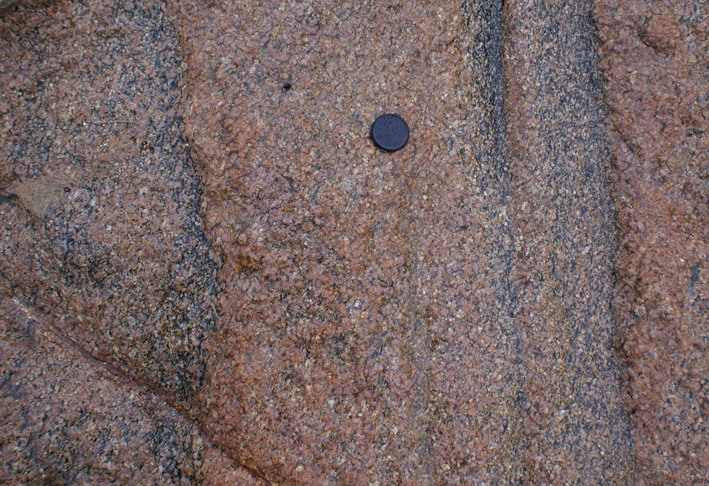
|
a) Rythmic vertical flow banding in granite at Point Brown.
|
b) Detail of flow banding in same outcrop as in (a) with gradation from
biotite rich on the right to biotite poor on the left.
|
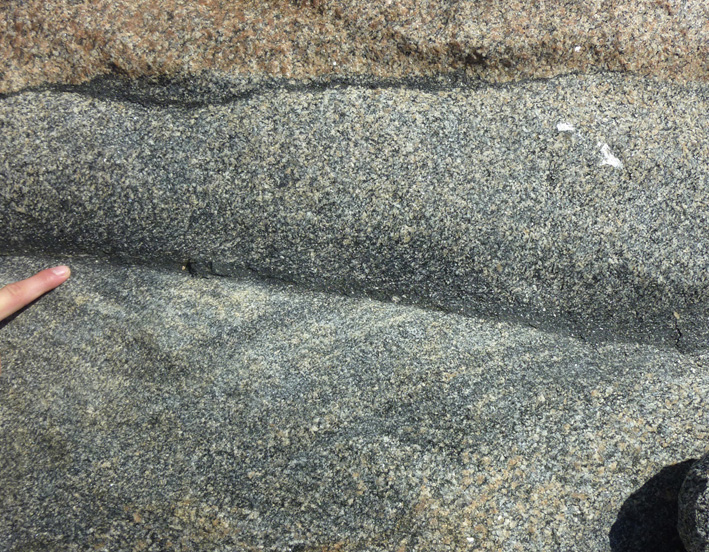
|
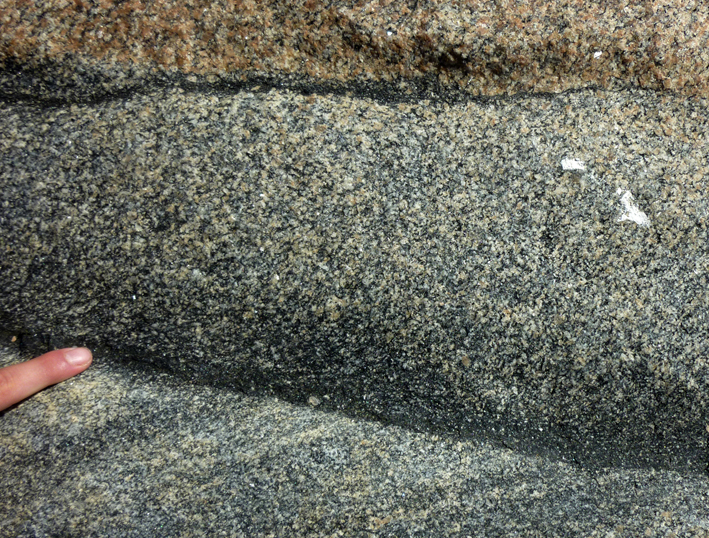
|
c) Flow banding: a top layer cuts across and truncates previously formed,
curved flow banding below. This is interpreted as an erosional channel. Point Brown.
|
d) Zoom in: gradation in colour index from a sharp margin and a biotite rich base
followed upwards by a gradual decrease in biotite content.
|
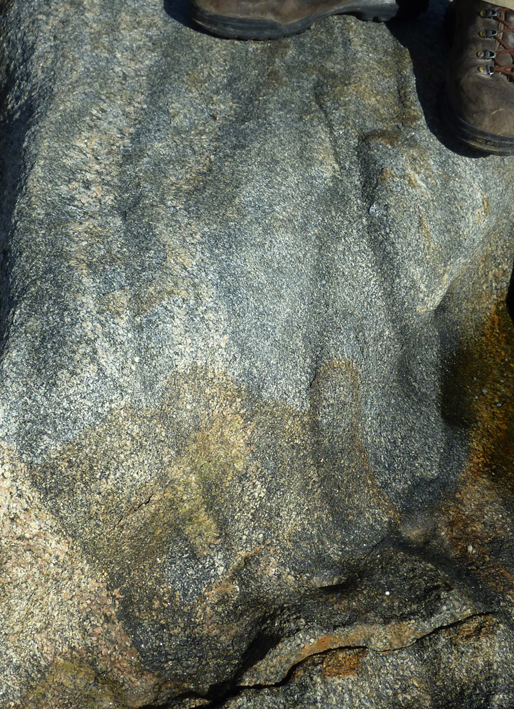
|
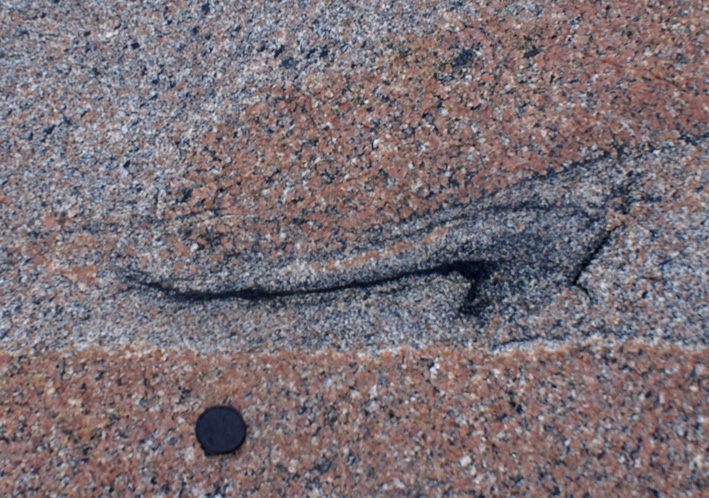
|
e) Irregular flow banding.
|
f) Flow banding folded in between two xenoliths of red coarse granite. |
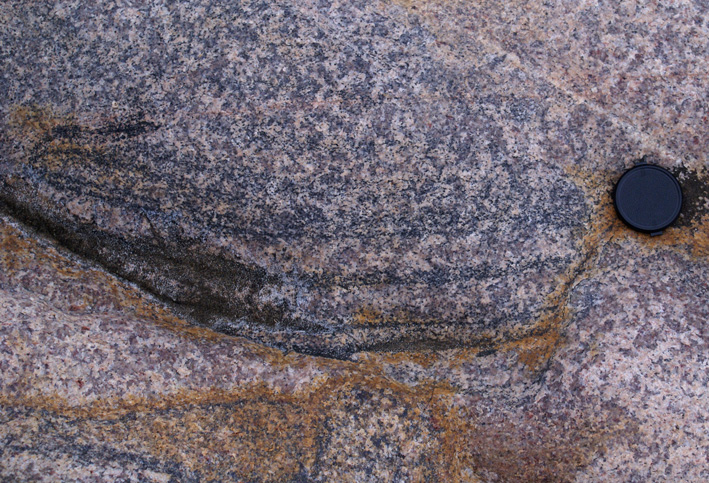
|
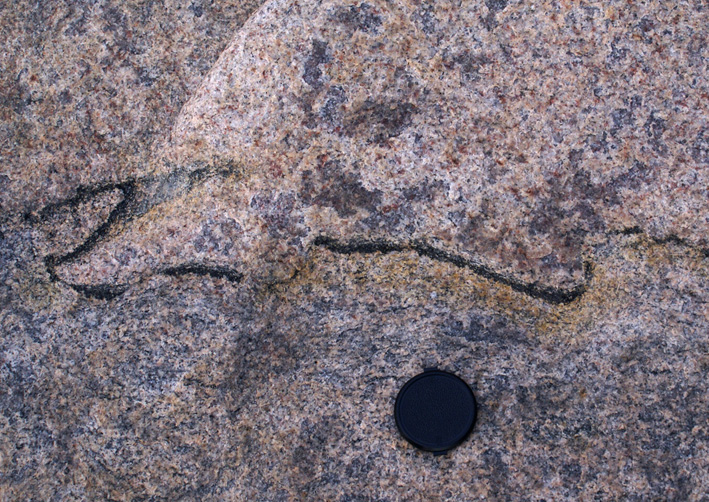
|
g) Erosional channel in contact between a grey granitic rock and a reddish granitic rock. Note how the
biotite schlieren at the base curves to form the basis of individual layers. Rocky Point.
|
h) Biotite schlieren, irregular in shape and locally discontinuous, at the contact between a grey granitic rock (below) and a
reddish granite above. The schlieren is associated with a biotite-free layer underneath. Interpretation: flow related
sorting and schlieren formation at the contact, between two magmas, subsequently stretched and folded by magmatic flow. Rocky Point.
|
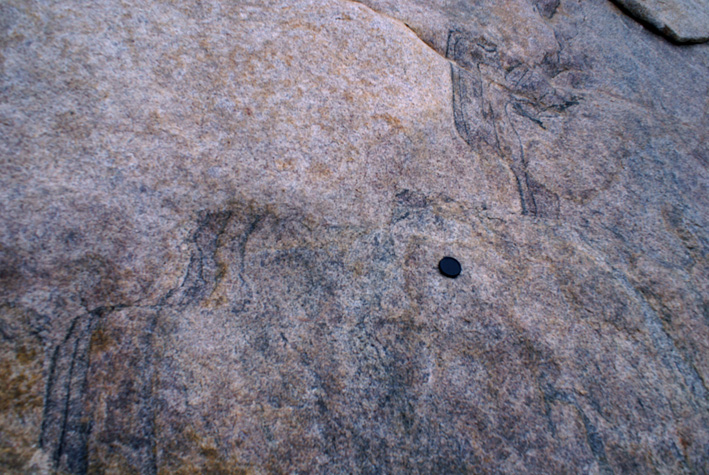
|
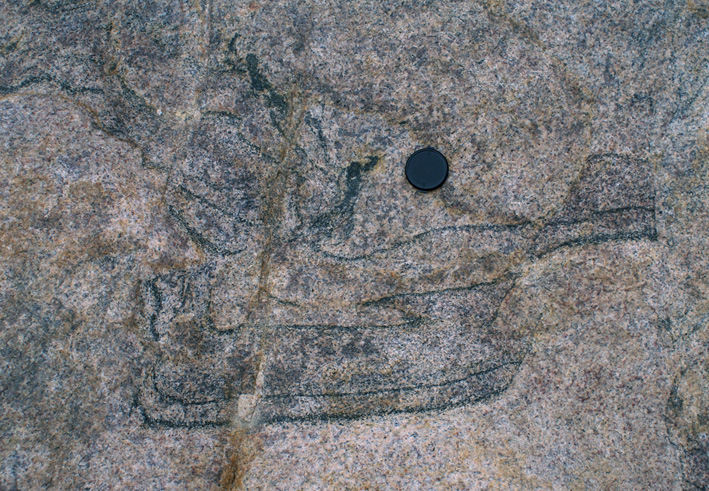
|
i) Banding at the contact between a grey granite and a red granite. Banding is broken up into
blocks separated by shear zones.
|
j) Detail of the banded contact.
|
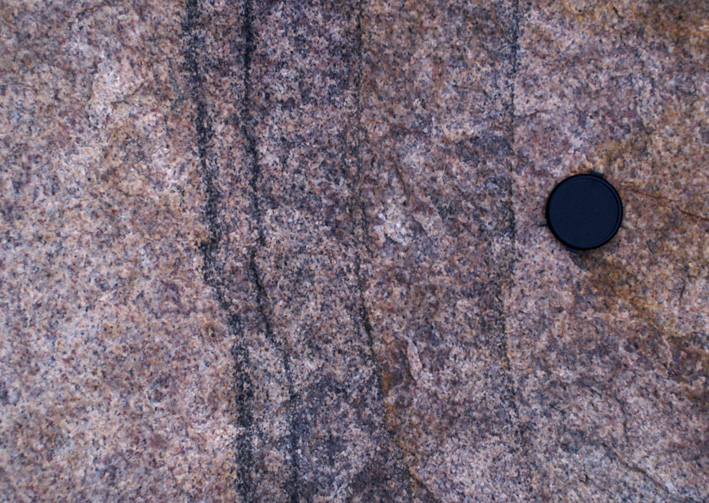
|
k) Close view of the banding at the contact.
|